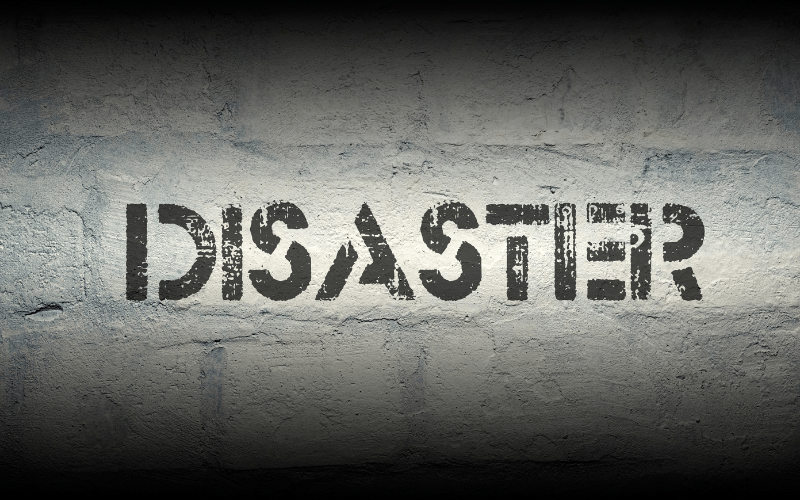How to Set a Firm Foundation for EMDR Therapy Reprocessing
Guest Blog Post by Kathleen Martin, LCSW
EMDR therapy is a full psychotherapy. It is not just the reprocessing phases. So often when clients drop out of psychotherapy or refuse to continue in the EMDR therapy reprocessing phases after experiencing one or two reprocessing sessions, it is possible that there hasn’t been enough time spent in the earlier phases of the Eight Phases in the EMDR Standard Protocol to prepare the client. Most clinicians have the impression that we must quickly get to the reprocessing phases, and if we don’t, we are not doing good EMDR therapy. Getting to the reprocessing phases quickly can usually occur with ‘simple’ PTSD. It is often a very different story for people with complex PTSD. And, if there is a dissociative process present (with or without meeting the criteria for a DSM dissociative diagnosis), the amount of time needed in the earlier phases of the Standard Protocol varies greatly. The number one mistake made in psychotherapy is going into the reprocessing phases too soon. I have had so many consultees come to me after realizing they took their client into the reprocessing phases too soon and increased the client’s resistance to reprocessing. This occurs more often than what is publicly talked about.
Start with a thorough Phase 1
So what is needed prior to the reprocessing phases? To start, you must have a good case conceptualization and treatment plan. That is the end result of a thorough Phase 1 of the Standard Protocol. This includes your typical assessment tools for PTSD, depression, etc., and of course, dissociation. Remember, Shapiro made it mandatory to use the dissociative experiences scale (DES) or another assessment/diagnostic tool for a dissociative process. It is clearly stated in her textbook: “… The clinician intending to initiate EMDR should first administer the Dissociative Experiences Scale-II (DES-II; Carlson & Putnam, 1992) and do a thorough clinical assessment with every client” (Shapiro, 2018, p. 96). Without this assessment, clinicians can unknowingly underestimate the work and time needed prior to entering the reprocessing phases.
Phase 1 gives us so much information about what history the client can/can’t tolerate, the client’s tolerance for affect, the client’s ability to shift to calm, self-regulation skills (adaptive and maladaptive), attachment style, etc. I have been a social worker for almost 50 years, almost 30 years being an EMDR therapy trained clinician, and I have rarely spent only 1 session in intake with a client (excluding the clients who come into treatment to process a recent event under 3 months). How can we have enough information in one 50-minute session to develop a good case conceptualization and treatment plan? Of course, even though we always fine-tune our case conceptualization and treatment plan with every contact with each client, we still need enough information to make our first informed decisions regarding what is necessary for a good, successful psychotherapy outcome, including what is necessary in Phase 2 of the Standard Protocol, in order to prevent harm.
Use a complex trauma lens
I think the number one thing clinicians can do to help prevent the phenomenon of clients dropping out of treatment or refusing to do future reprocessing sessions after their first encounter with Phase 4, is to become well-trained in working with complex PTSD, including how to treat someone with a dissociative process. PTSD, including simple PTSD, assumes there is a concurrent dissociative process. There may not be a DSM-diagnosable dissociative disorder, but there still can be a dissociative process. I recommend learning Structural Dissociation Theory as that provides the foundation to help think about the client, what needs to happen in the preparation phase, and what skills to use to treat the dissociative process in Phase 2 prior to the reprocessing phases. I have noticed that clinicians with this body of knowledge and skill have much better results throughout their entire caseload regarding preparing a client for successful reprocessing. Remember, dissociation is about not being able to tolerate some or all of the maladaptively stored information. If the maladaptively stored information is inside the window of tolerance, we don’t need a psychotherapist’s help because our AIP system will naturally process it. Therefore, we can assume that at least some of the maladaptively stored material that a client is entering psychotherapy to seek help with is outside their window of tolerance and therefore the possibility of a dissociative process is high. We must be prepared for this inevitability.
Assess for the ability to tolerate calm
One more thing I want to mention. It is important for an EMDR therapist to assess the client’s ability to tolerate calm. This is highly overlooked and undervalued. Dr. Francine Shapiro made Safe Place/Calm Place mandatory in Phase 2 of the Standard Protocol. Why? Because both the client and clinician need to know that the client can quickly and adaptively switch out of disturbance into calm both in and out of the session. How long does it take to understand a client’s ability to do this? How long does it take to develop this skill in each client? The answers will be different for each client. One of the first questions I ask a clinician during case consultation when we discuss readiness factors for reprocessing is: what is the client’s positive affect tolerance like? It amazes me that many clinicians cannot articulate this. When I persist, I often get answers such as my client can smile, tell jokes, and have relationships. Frankly, this does not tell me about the client’s ability to tolerate calm or their ability to switch to calm. All clinicians need to become well-trained in assessing positive affect tolerance and have a  myriad of skills in our toolkit so we can become better at helping our clients achieve this necessary self-regulation skill for good mental health and successful reprocessing of maladaptively stored information. And sometimes, this means the clinician must do her/his own personal work on increasing one’s tolerance for calm and other positive affects. We can’t take a client further than where we have gone. And, this work must be done before entering the reprocessing phases.
myriad of skills in our toolkit so we can become better at helping our clients achieve this necessary self-regulation skill for good mental health and successful reprocessing of maladaptively stored information. And sometimes, this means the clinician must do her/his own personal work on increasing one’s tolerance for calm and other positive affects. We can’t take a client further than where we have gone. And, this work must be done before entering the reprocessing phases.
Kathleen Martin, LCSW, ISSTD Fellow, EMDRIA Consultant and Trainer, is an international trainer on EMDR therapy and the treatment of complex trauma. In her private practice in Rochester, New York, USA, she uses EMDR therapy extensively in her specialty of PTSD, trauma and dissociation. She has published numerous articles and book chapters on EMDR therapy and the treatment of dissociation and complex trauma. She has integrated Structural Dissociation theory into her clinical practice and teaches master classes to help clinicians do the same.
References
Shapiro, F. (2018). Eye Movement Desensitization and Reprocessing Therapy: Basic Principles, Protocols, and Procedures (3rd ed.). The Guilford Press.
Back to Focal Point Blog Homepage
Additional Resources
If you are a therapist interested in the EMDR training:
- Learn more about EMDR therapy at the EMDRIA™ Library
- Learn more about EMDR Training
- Search for an EMDR Training Provider
- Check out our EMDR Training FAQ
If you are EMDR trained:
- Check out the EMDRIA Let’s Talk EMDR Podcast
- Check out the EMDRIA Focal Point Blog
- Learn more about EMDRIA™ membership
- Search for EMDR Continuing Education opportunities
If you are an EMDRIA Member:
- Learn more about EMDR Consultation
- Find clinical practice articles in the EMDRIA Go With That Magazine®
- Search for articles in Journal of EMDR Practice and Research in the EMDRIA Library
Date
January 3, 2025
Contributor(s)
Kathleen Martin
Topics
Complex Trauma/C-PTSD
Practice & Methods
8 Phases, Your EMDR Practice





